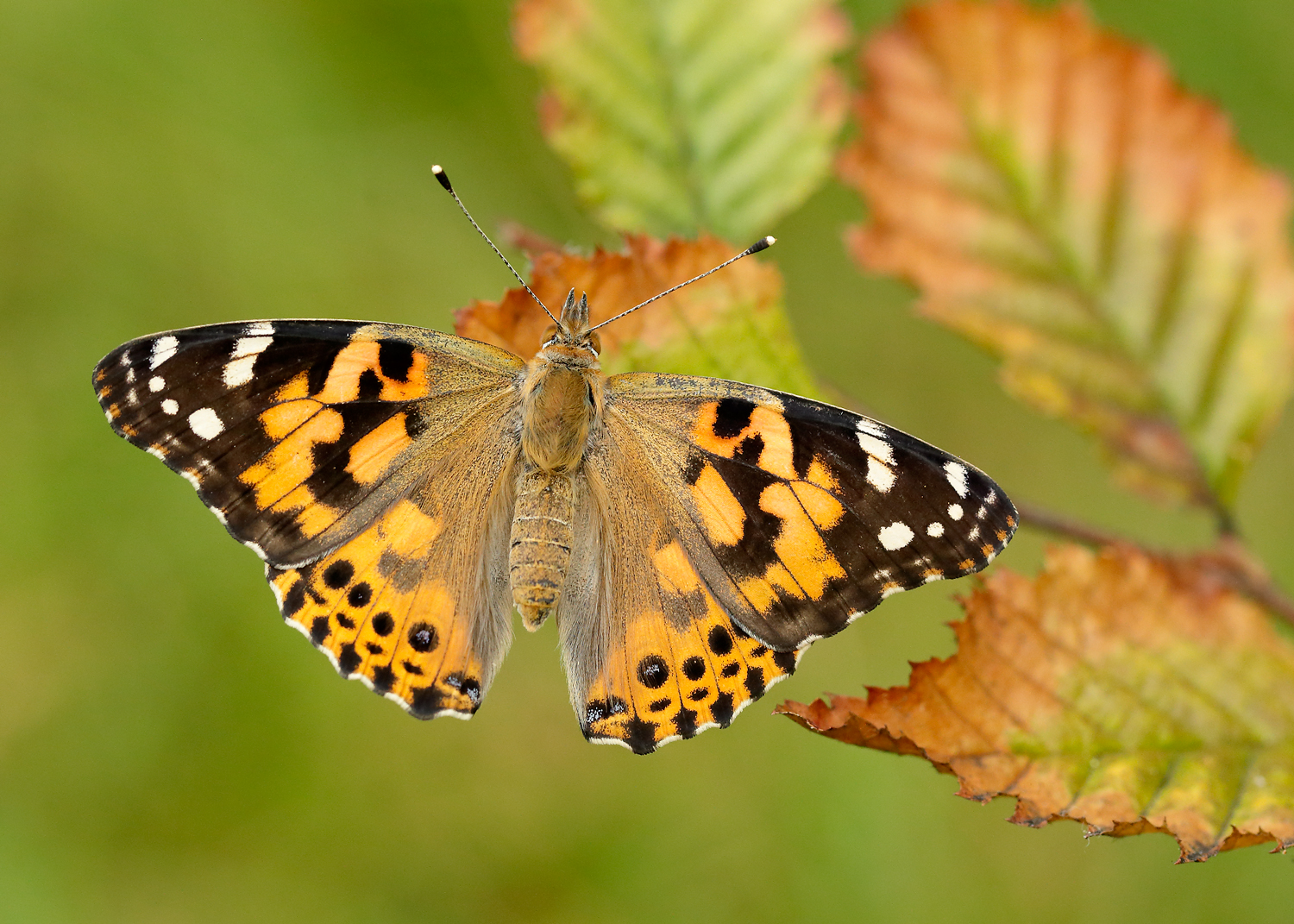Much has been learned in recent years about the amazing migration of the Painted Lady. Sightings from 67 countries, including many from Butterfly Conservation members, have enabled scientists to plot the annual, multi-generational migratory cycle from North Africa in early spring, northwards across Europe during spring and summer, and then followed by southerly migration back, ultimately, to Africa.
However, activity within Africa through the autumn and winter remained unclear. Now two new studies have provided more pieces of the puzzle. First, Spanish researchers undertook surveys for Painted Lady adults and caterpillars across four African countries south of the Sahara during autumn 2014 (Talavera & Vila 2016). They encountered the species wherever they travelled, including thousands of adults migrating southwards in Chad and mass breeding in the Ethiopian Highlands. The timing of records and southerly movements suggested that the butterflies had arrived direct from Europe, crossing both the Mediterranean and the hostile Sahara Desert, in journeys of over 4,000km.
In addition to recording, the researchers collected a small number of Painted Ladies on their travels and these provided the key input into the second study. A team led by Constantí Stefanescu analysed the hydrogen isotopes in the wings of these butterflies (Stefanescu et al. 2016). These isotopes are accumulated during the larval phase of the butterfly’s life cycle and, because different hydrogen isotopes occur in different proportions around the world, the analysis revealed where each Painted Lady had lived as a caterpillar. It confirmed that most of the autumnal Painted Ladies caught in sub-Saharan Africa had emerged in southern or central Europe and must therefore have undergone one of the longest migratory journeys recorded for any insect.
We now know that the migratory cycle extends down into sub-Saharan Africa in the autumn, but there is still more to uncover about where the butterflies go next and how many more generations occur in Africa during the winter months.
Richard Fox
Head of Recording
Follow me on Twitter: @RichardFoxBC


